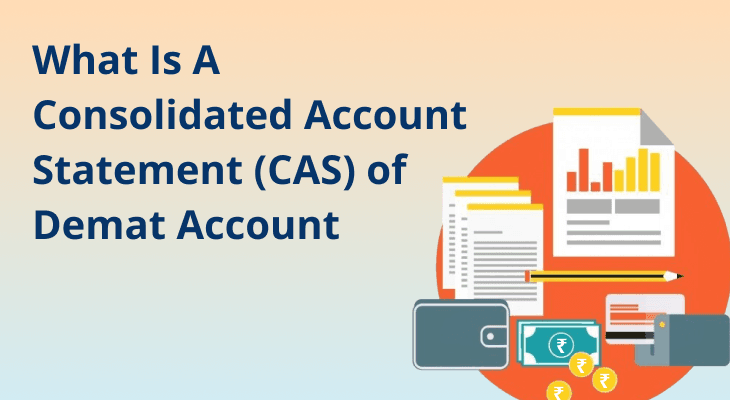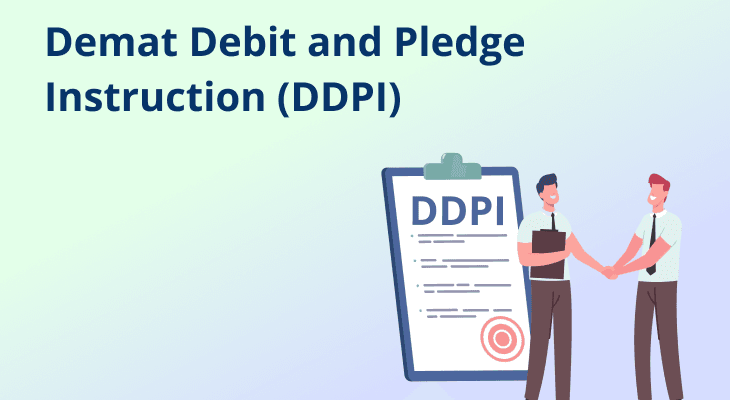
Table of content
- What Is A Consolidated Account Statement?
- What Does CAS Cover?
- Who Issues The CAS In India?
- How To Download Consolidated Account Statement Online?
- Frequency And Timeline Of CAS
- Benefits Of CAS For Demat Account Holders
- How To Read And Understand Your CAS Report?
- Other Notable Aspects
- What To Do If You Don’t Receive Your CAS?
What Is A Consolidated Account Statement (CAS) Of Demat Account?
For retail investors, managing investments can become rather complex when your holdings cover a variety of instruments such as stocks, mutual funds, bonds, and government securities. This is where a Consolidated Account Statement (CAS) comes in. CAS simplifies tracking by combining transactions and holdings from demat accounts and mutual fund folios under the same PAN. It is a powerful tool for staying informed about holdings, portfolio value and activity, all in one report.
What Is A Consolidated Account Statement?
A Consolidated Account Statement (CAS) is a detailed document that summarises all your investments across mutual funds, bonds, ETFs, and demat accounts under a single PAN. It is issued by depositories like NSDL and CDSL, and includes:
- Portfolio holdings (stocks, ETFs, mutual funds, bonds)
- Transaction details (purchases, redemptions, dividends, etc.)
- Valuation summary
- Charges and fees deducted
- ISIN (International Securities Identification Number) details
The CAS makes it easy for investors to track their net worth and investment performance, helping with financial planning and compliance (especially for taxes and audits).
What Does CAS Cover?
Before diving into the details of how to download or interpret a CAS, it helps to know what exactly it includes. The Consolidated Account Statement isn’t just a summary of your mutual funds, it provides a full overview of your financial securities linked to a single PAN. Here’s what it typically covers:
- Equity shares in your demat account
- Mutual fund units (across AMCs)
- Sovereign gold bonds (SGBs)
- ETFs and index funds
- Bonds and debentures
- Dividend and interest payouts
Even if your investments are made through different platforms or brokers, as long as they are linked to the same PAN, they get captured in your CAS.
Who Issues The CAS In India?
In India, the Consolidated Account Statement is issued jointly by two main depositories:
- NSDL (National Securities Depository Limited)
- CDSL (Central Depository Services Limited)
These depositories coordinate with mutual fund RTAs (Registrar and Transfer Agents) like CAMS and KFintech to consolidate data across your mutual fund and demat holdings.
Typically:
- If your first demat account was opened with NSDL, NSDL will issue your CAS.
- If your first account was with CDSL, then CDSL will issue your CAS.
This standardisation ensures one consolidated report per investor per month, even if you have accounts with multiple AMCs or brokers.
How To Download Consolidated Account Statement Online?
If you're actively investing, it’s important to know how to access your Consolidated Account Statement (CAS) whenever needed. Fortunately, downloading your CAS is a simple process that can be done online through CDSL, NSDL, or even CAMS. Here's a step-by-step guide to help you get started:
1. Download CAS via NSDL
- Visit: https://cas.nsdl.com
- Select "NSDL CAS" option.
- Enter your PAN, date of birth, and captcha.
- Choose between PDF delivery by email or download online.
- You may receive a password-protected PDF on your registered email.
2. Download CAS via CDSL
- Visit: https://www.cdslindia.com
- Go to "CAS Statement" under Investor Services.
- Enter PAN and DP account details.
- Select statement period and format.
- Receive the statement via email.
3. Download CAS via CAMS (for mutual fund-only CAS)
- Visit: https://www.camsonline.com
- Go to "Mailback Services" > "Consolidated Account Statement"
- Input email, PAN, and password preference.
- Choose the time period (last 30 days, custom range, etc.)
- Statement is emailed to your registered email ID.
Note: The CAS file is password-protected. Usually, the password is a combination of your PAN (in uppercase) and your date of birth (DDMMYYYY).
Frequency And Timeline Of CAS
Understanding when and how often you receive the Consolidated Account Statement (CAS) is essential for tracking your investments regularly. Usually, the frequency depends on your transaction activity, and regulatory guidelines ensure timely delivery. Let’s look at how this works and when you can expect your CAS.
- Monthly CAS: If there is any transaction in your demat or mutual fund account in a given month, you’ll receive a CAS within the 10th of the following month.
- Quarterly CAS: If no transactions occur in a given month, CAS is sent quarterly.
You can also request on-demand CAS at any time from NSDL/CDSL/CAMS if you need updated data for tax filing or portfolio analysis.
Benefits Of CAS For Demat Account Holders
Understanding your CAS gives you several key advantages:
1. Unified Investment Summary
No need to check multiple platforms. CAS consolidates all your securities and mutual fund transactions in one report.
2. Helps in Tax Filing
CAS records dividend receipts, redemptions, capital gains, and interest—making it easier to calculate taxable income from investments.
3. Track Portfolio Performance
It displays the current value of each investment, helping you measure returns and rebalance your portfolio accordingly.
4. Transparency & Compliance
You get a clear trail of all transactions, ISINs, charges, and payouts—crucial for KYC, compliance, or audits.
5. Prevention of Unclaimed Investments
Seeing all investments in one place reduces the chance of forgetting small holdings or old folios.
How To Read And Understand Your CAS Report?
The CAS can feel dense at first glance, but breaking it down makes it manageable:
Section | What It Contains |
|---|---|
Personal Details | Name, PAN, email, mobile |
Folio Details | AMC name, folio number |
Transaction Summary | Purchases, sales, SIPs, dividends |
Holding Statement | Quantity of units, NAV, current value |
Charges & Fees | Brokerage, STT, demat charges |
ISINs | Unique codes for each security |
Example: If you bought 10 shares of a stock via your broker and also invested ₹5,000 in a mutual fund SIP, your CAS will show:
- The stock name, purchase date, quantity, and value
- The mutual fund scheme, number of units, NAV, and SIP amount
Other Notable Aspects
- CAS Is PAN-Based: If you have multiple demat or MF accounts under the same PAN, your CAS reflects all of them.
- Joint Holdings: If an account is jointly held, only the primary holder's PAN is used for generating CAS.
- Inactive Accounts: Even dormant accounts will show up if there is a holding or recent transaction.
- Nominee and Contact Info: CAS also includes registered nominee details and your contact information, both of which are important for estate planning or updates.
- Password-Protected Files: Always keep your PAN and date of birth handy to access the file securely.
What To Do If You Don’t Receive Your CAS?
If you haven't received your CAS even after a transaction in a given month:
- Check spam/junk folders in your email.
- Verify your email ID with your broker or AMC.
- Request a fresh CAS directly via NSDL, CDSL, or CAMS.
- If still unresolved, raise a support ticket with your broker or AMC.
You can also subscribe to receive monthly CAS directly from your preferred platform or update your email via KYC services.
Conclusion
The Consolidated Account Statement (CAS) is more than just a monthly email, it’s a crucial document that empowers investors to stay on top of their finances. Whether you're tracking your first SIP or holding a diversified stock portfolio, the CAS offers clarity, transparency, and control.
Downloading and understanding your CAS is a key part of becoming a smart, informed investor. With the ease of online access and the growing importance of tracking investments, it’s a tool every demat account holder should know how to use.
FAQ
What is a Consolidated Account Statement (CAS)?
A CAS is a monthly or quarterly statement that consolidates all your mutual fund and demat account holdings under a single PAN. It helps you track investments, dividends, capital gains, and portfolio performance across platforms in one document.
Who sends the CAS to investors in India?
CAS is issued jointly by NSDL or CDSL, depending on where your first demat account was opened. They work with mutual fund RTAs like CAMS and KFintech to compile and send you a single, consolidated report linked to your PAN.
How can I download the consolidated account statement online?
You can download CAS from the NSDL website, CDSL portal, or CAMS online. You’ll need to enter your PAN and verify your registered email. The statement is usually emailed in a password-protected PDF format for security.
What is the password to open the CAS PDF file?
The CAS is usually protected with a password, which is a combination of your PAN (in uppercase) and your date of birth in DDMMYYYY format. For example, if your PAN is ABCDE1234F and DOB is 05 Jan 1990, then password is ABCDE1234F05011990.
What happens if I have accounts in both NSDL and CDSL?
Your CAS will be issued by the depository where you first opened your demat account. Regardless of where your accounts are, the CAS will consolidate all holdings under your PAN into one statement.
Will the CAS show mutual fund investments from all AMCs?
Yes, CAS includes mutual fund holdings across all Asset Management Companies (AMCs), provided they’re linked to the same PAN. Even if you invested via different apps or platforms, it all gets reflected
How often do I receive my CAS?
If there’s any transaction in a month, you receive your CAS monthly. If not, it’s sent quarterly. You can also manually request a CAS for any time period if needed for tracking or tax purposes.
Can I request a CAS for a custom date range?
Yes, platforms like CAMS and NSDL allow you to request a CAS for any custom date range (last 30 days, financial year, etc.). This is particularly useful during income tax filing or capital gains calculation.
What if I don’t receive my CAS?
If you haven’t received your CAS, first check your email's spam folder. Then verify that your email is updated with your broker or AMC. You can also request a fresh CAS from NSDL, CDSL, or CAMS easily.
Does CAS help with income tax filing?
Absolutely. CAS contains detailed information on dividend income, redemption proceeds, and capital gains, all of which are essential for filing your income tax returns accurately and avoiding compliance issues.


